
© Julian Mommert. (Click image for larger version)
Tanztheater Wuppertal Pina Bausch
Since She by Dimitris Papaioannou
★★★★✰
London, Sadler’s Wells
14 February 2019
www.pina-bausch.de
www.sadlerswells.com
Familiar faces from Pina Bausch’s Tanztheater Wuppertal family and new ones emerge from a tiny side door in the wings. Their task it to cross the stage stepping precariously on chairs and pass them along to form a line. Wearing restricting high heels and evening wear, their job of transporting chairs as well as balancing on them is not made any easier. Welcome to the world of Pina Bausch but through the nostalgic lens of Dimitris Papaioannou. Scenarios like this, or the many random and bizarre acts that follow in Papaioannou’s Since She tap into Bausch’s legacy yet it’s important (but sometimes difficult) to see the work on its own terms.
Since She carries the acclaim of being both Papaioannou’s first full length piece for another company and the first full length work by performed by Tanztheater Wuppertal created by another choreographer. It celebrates Papaioannou’s own distinctive style but lies still within Bauschian territory. What Papaioannou brings is powerful, slick new imagery from the visual arts, performance art, film and Greek mythology. It’s a work about the human condition, loss and liminal spaces – there are frequent metaphors of travel and boats. While themes around the body are central to the piece, as objects to be fragmented, unwrapped, penetrated, distorted, extended and desired.
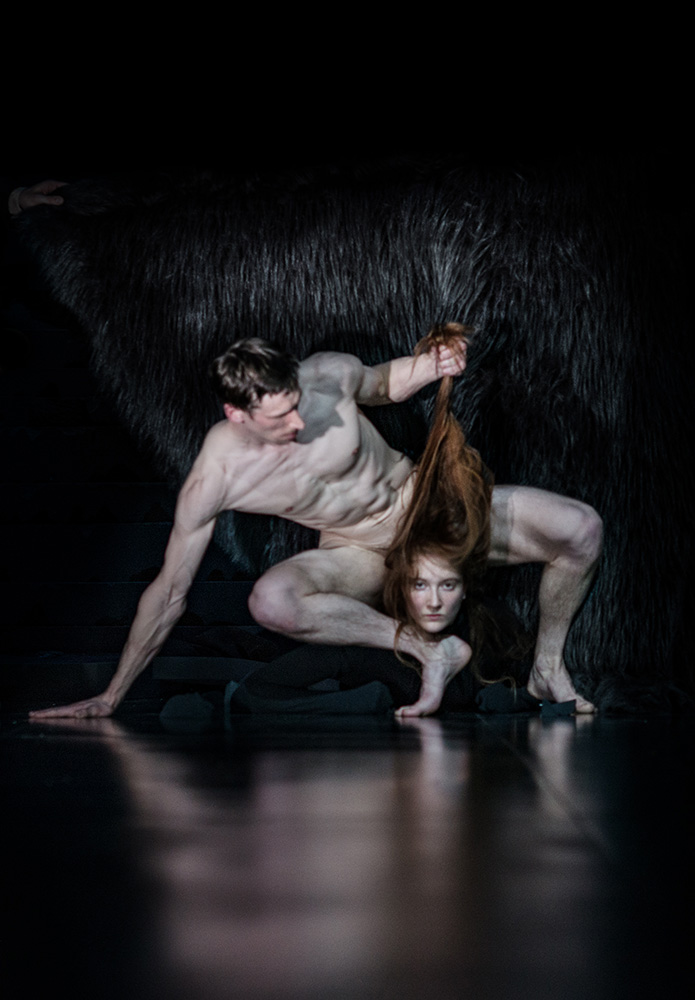
© Julian Mommert. (Click image for larger version)
Papaioannou challenges the way we perceive bodies by creating optical allusions as when Tsai-Wei Tien dances for Milan Kampfer with many pairs of legs (of others) underneath her skirt. Or when the head of Breanna O’Mara, resplendent with flowing red hair but disembodied, appears between the naked thighs of male dancer Scott Jennings. There’s also a carnivalesque scene in which Oleg Stepanov with long tubes inserted inside his clothing staggers around the stage like a clown trying to make sense of his stilts, both comical yet disconcerting to watch.
Black foam slabs piled high in a mountainous heap up stage (a nod to the coal fields of the mining town Essen, TW’s home), is an imposing presence and an important frame of reference: a source of life and a final resting place. At the beginning we see the solitary, lost figure of Ruth Amarante, TW veteran, silhouetted against the back wall staggering across the top; a home to which she returns at the end of the show. Dancers drag objects up this looming mound, such as Ditta Miranda Jasjfi with her tree, while others slide down it or disappear into its soft folds.

© Julian Mommert. (Click image for larger version)
When members of the company are scattered across the space, engrossed in their own idiosyncratic solos such as washing, posturing, eating, trying to balance several chairs on their backs, the stage resembles an experimental film set; each person pursuing his or her own little adventures which somehow fit together in a huge collage. Music ranging from Mahler to Greek folk float in and out, adding emotional nuance to their functional actions.
Papaioannou, together with his own precision and surreal painter’s eye takes advantage of the company’s incredible dexterity to manipulate a range of mundane structures and infuse them with life. It’s fascinating to see the care with which ordinary tasks are completed such as filling glasses with water, then placing them on a reclining woman’s fanned out hair. Tubes are used to extend the body by inserting them into clothing but also function as rollers to allow people or objects to journey across the stage. The dancers glide over them as if they were mini surf boards astounding us with their meticulous balance; upside down tables function as boats, transporting groups of giggling performers over an imaginary river.

© Julian Mommert. (Click image for larger version)
Imagery ranges from the beautiful to the grotesque, from the sublime to the ridiculous: Julie Anne Stanzak stands in tight black evening dress, freezing the audience with her icey gaze, waiting for male attention. A group of men swarm around her and through stroking her body they turn her dress gold. Flickers of pleasure dance across her face before she puts on a black ram’s mask which suggests an altogether more sinister figure from the underworld. In a scatological cooking scene, a group of women preparing food play around with a frankfurter, squeeze it until it ejaculates, then chop it up for dinner. Childish games are interspersed with weighty metaphors that question one’s corporeal boundaries – Ruth Amarante’s body, gradually slips down the black foam mountain like something discarded.
While the male body is very much adored in Since She so is the female body, although through the perspective of the male gaze. Women are flirtatious and playful; they appear as models, muses and goddesses while the men are often predatory. It’s curious how heterosexual the show feels through the ways in which men and women relate; there’s little evidence of same sex desiring. Breanna O’Mara appears like a pre-Raphaelite muse covered in green foliage which is held in place by an over-attentive gaggle of men. She battles through her green barrier and escapes only to coquettishly glance back at the men and bite into a piece of fruit.
Papaioannou weaves in many references to Bausch’s work and deliberately asks us to find them, the work is fuelled by his love for her. But he also invites us to move on from the nostalgia trip. While there is stuff that we miss from her work – her expressionistic dance language, her limitless depths of pathos, he presents us with fresh images, content and styles, escorting this superb company to new pastures.












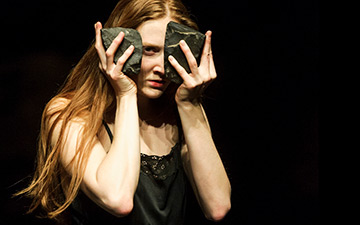

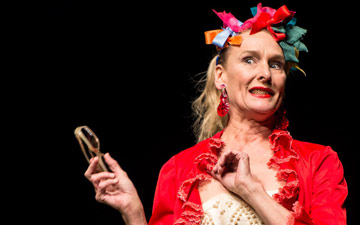
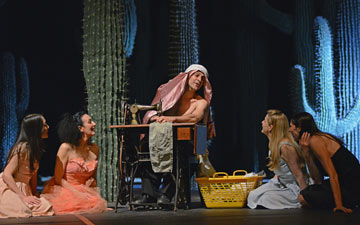
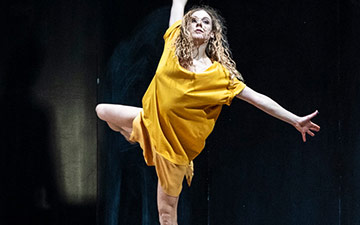
You must be logged in to post a comment.